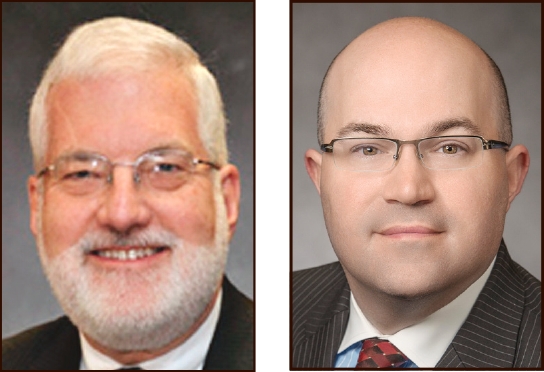Attorney's Column
Court Clarifies that Scaffold Law Only Applies to Workers
By THOMAS H. WELBY, P.E., ESQ. and GREGORY J. SPAUN, ESQ.

Sections 200, 240(1), and 241(6) of New York’s Labor Law are commonly referred to as New York’s “Scaffold Law.” The Scaffold Law was enacted back in 1885, long before the advent of the Worker’s Compensation statutes or regulatory schemes designed to enforce worker safety (such as OSHA and its state analogues). New York is the last state with such a law on its books, and it is widely credited with driving up construction and insurance costs.
Further, in viewing the results of the repeal of Illinois’ Scaffold Law back in 1995, it is not universally accepted that the law actually achieves its stated goal of promoting worker safety. However, until it is modified to include a comparative negligence standard (that accounts for any failures of the worker to follow directions or otherwise work correctly), it is accepted that any time a worker falls from a height or is hurt as a result of a violation of the
Industrial Code, the employer has no defense to the claim. Accordingly, high payouts by insurance companies (and high premiums for insurance policies) are a reluctantly accepted cost of engaging in construction in New York.
While workers are insulated from the consequences of their own negligence by virtue of the absolute liability imposed by the Labor Law, an appellate court, in Lauria v Lippolis Construction, Inc., reminds us that the benefits afforded by the Scaffold Law only apply to workers on the site, and not third parties.
Background
Prior to May of 2016, Lippolis Construction engaged to construct two homes on Avenue C in the Village of North Port Washington. In May of 2016, Lippolis excavated for the foundations of both homes, and on May 16, 2016, it was commencing to construct the forms for the footings. Before it poured concrete for the foundation, Lippolis requested that the village inspect the excavation and forms for the footings to make sure that everything would comply with the local building code. The village sent Building Inspector Fred Lauria to the site to perform the inspection. This was not Mr. Lauria’s first visit to the site. Unfortunately, during this particular visit, Mr. Lauria tripped and fell, suffering a torn ACL and other associated injuries. Accordingly, Mr. Lauria commenced a personal injury lawsuit against Lippolis, alleging that Lippolis was negligent and also violated the applicable provisions of the Scaffold Law.
After discovery, Lippolis moved for summary judgment to dismiss the lawsuit. In support of the dismissal of the Labor Law claims, Lippolis noted that it was not disputed that he was only an employee of the village, and was not an employee of Lippolis or any other contractor on the site. As to the negligence claim, Lippolis argued that the excavation was open and obvious, and was not inherently dangerous; accordingly, Lippolis was not negligent in maintaining the site as it did. In opposition, Mr. Lauria claimed that as an “inspector,” he is entitled to recovery under the Labor Law. Mr. Lauria also argued that there were questions as to whether the excavation constituted a hazard, which needed to be resolved at trial.
Decision
The motion court granted Lippolis’ motion to the extent that it dismissed the Labor Law claims. In doing so, the court found that as Lauria was not an employee, he was not entitled to the protections set forth in the Labor Law. However, as to the negligence claim, the court found that, there was an issue of fact which precluded summary judgment. Lauria appealed, seeking to revive the Labor Law claims (with their strict liability standard). However, the appellate court affirmed, citing well settled case law that “the plaintiff was not within the class of persons subject to the protections of the Labor Law.”
Comment
At first blush, one would believe that the plaintiff would have been relieved that he was able to stave off summary judgment dismissing his negligence claim and, therefore, have his proverbial day in court. However, the Scaffold Law is particularly onerous because of its imposition of absolute liability—which does not permit the consideration of whether the plaintiff also had any fault for his injuries, or how much effort the contractor put into safety, or otherwise preventing the accident in the first place. Where strict liability is imposed, it is not a question of whether the plaintiff will get paid, only how much? Accordingly, one can understand why the fight over this standard is fought so vigorously. In the meantime, this decision reminds contractors that while common law negligence provides an incentive to provide for the safety of all of those on the worksite, the most onerous requirements are reserved for the protection of workers.
About the author: Thomas H. Welby, an attorney and licensed professional engineer, is General Counsel to the Construction Industry Council of Westchester & Hudson Valley, Inc., and the Building Contractors Association, and is the Founder of and Senior Counsel to the law firm of Welby, Brady & Greenblatt, LLP. Gregory J. Spaun, General Counsel to the Queens and Bronx Building Association, and an attorney and a partner with the firm, co-authors this series with Mr. Welby.
